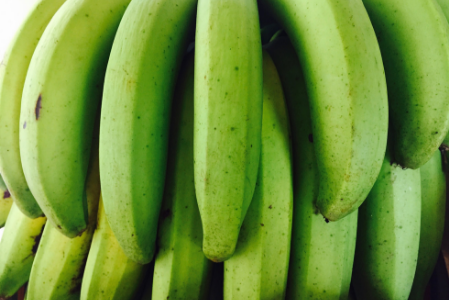High blood pressure, also referred to as hypertension, is one of the most common health conditions in the world. According to the Centers for Disease Control and Prevention (CDC), hypertension affects 75 million people in America – that’s one out of every three U.S. adults. This dangerous condition, also known as the “silent killer”, is relatively asymptomatic; symptoms typically occur when blood pressure is extremely high for too long of a period.
Persistent high blood pressure can cause severe damage to blood vessels. As a result of damaged blood vessels, kidney disease and heart disease may become complications. Therefore, it is important to monitor blood pressure regularly and get it under control.
An Overview of Hypertension
Hypertension occurs when the force of blood against the artery wall is too high over a long period of time. The condition is identified when individuals get their blood pressure checked with a blood pressure monitor at a doctor’s office or at home.
Blood pressure readings include two values: a systolic value (top number) and a diastolic value (bottom number). Normal blood pressure readings are below 120/80 mm Hg. If either the systolic or diastolic values exceed normal, a diagnosis of hypertension may occur.
So, What Causes High Blood Pressure?
Despite the fact that high blood pressure is a very common condition, there is not enough information leading to any direct cause of the disease. Most people do not experience any symptoms, and researchers have yet to identify any specific mechanism that causes blood pressure to gradually increase overtime.
However, we are familiar with the risk factors. High blood pressure is oftentimes reflective of lifestyle choices. Habits and conditions that can negatively impact blood pressure include: obesity, excessive alcohol consumption, regular consumption of salty foods, and eating foods with monosodium glutamate (MSG). Exercise, weight loss, regular sleep and a plant-based diet are a few lifestyle choices that can help normalize blood pressure. To a lesser degree, genetics can also influence one’s susceptibility of developing high blood pressure.
How Potassium Can Affect Blood Pressure
Potassium is a very important nutrient for the heart and the nervous system. Potassium and sodium have a dynamic relationship in which one functions better with the other – like a classic pair. Together, these two minerals manage bone health, nervous system signaling, and muscle contractions.
Potassium and sodium are electrolytes that are important for fluid balance. They are everywhere in the body in various bodily fluids, managing how much fluid to expel or retain within the cells. If normal amounts of these minerals are consumed in the diet, fluid balance is managed well within healthy ranges.
Today, sodium is found in excessive amounts in a variety of foods. The least likely place to find high amounts of sodium is in the produce section of the grocery store. Whole plant-based foods contain not only minimal amounts of sodium, but also high amounts of potassium. Consuming foods high in potassium will balance out the negative effects of high sodium, and eventually normalize blood pressure.
The kidneys do a a great job of balancing fluid levels throughout the body. In healthy people, excess sodium is excreted out the body as urine. However, persistently eating high amounts of sodium wrecks havoc on the delicate fluid balance. The kidneys lose their ability to maintain proper electrolyte balance as sodium levels increase. The kidneys store excess sodium, and as a result excess water is retained. Blood pressure increases as the body stores more water, so it is best to reduce sodium.
How to Get More Potassium in Your Diet
In the United States, an adequate intake of potassium is set at 4,700 mg per day for adults. However, according to data from the National Health and Nutrition Examination Survey (NHANES), most Americans do not meet this requirement .
The potassium deficiency experienced in America is largely due to the lack of whole fruits and vegetables in the Western standard diet. To experience the benefits of potassium, try to consume more fresh produce, especially those higher in potassium. Excellent sources of potassium include:
- potato, baked with flesh – 941 mg per 1 medium potato
- prune juice, canned – 707 mg per 1 cup
- carrot juice, canned – 689 mg per 1 cup
- beet greens, freshly cooked – 654 mg per 1/2 cup
- adzuki beans, cooked – 612 mg per 1/2 cup
- sweet potato, baked with flesh – 542 mg per 1 medium potato
- chard, swiss, cooked – 481 mg per 1/2 cup
- lima beans, cooked – 478 mg per 1/2 cup
- banana – 422 mg per 1 medium fruit
Try to aim for 1,000 – 1,500 mg of potassium in every large meal to ensure that you are consuming enough potassium every day.
Potassium supplements are not good option when treating hypertension. The kidneys regularly keep potassium levels checked; however, individuals with certain conditions and impaired kidney function have an increased risk of damaging other organs if too much potassium is consumed. The FDA limits over-the-counter potassium supplements to 100 mg of potassium – a tiny fraction of the daily recommended dosage. Natural food sources of potassium are considered safe, healthy, and the best sources of potassium.
Grocery stores provide salt substitutes, which contain high amounts of potassium. These substitutes not only will help curb any salt cravings, but also increase the amount of potassium in the body.
As always, please consult with your primary care physician, especially if you have issues with blood pressure, before reaching for any supplements to add to your diet.

